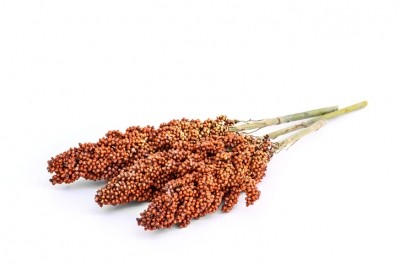USDA: Low corn prices see decrease in sorghum use, support animal production in Mexico

The US Department of Agriculture released details for both feed grain and animal production in Mexico in a series of reports last week.
Production expectations and imports have been lowered for sorghum, while the agency forecasts an increase in wheat planting acreage, the attaches said.
“For MY 2018/19, the total [feed grains] consumption estimate has been revised downward from the USDA/official estimates to 4.85 MMT, based on information from official and private sources,” they said. “Private sources noted that feed consumption is expected to shift away from sorghum to feed corn, due to lower-than previously-estimated domestic sorghum production and consequently higher domestic prices.”
“In addition, private sources stated that expected lower corn prices would continue stimulating Mexico’s import demand for yellow corn from the animal feed sector, and that the United States should continue to be the main supplier to cover that demand,” they added.
Low feed prices coupled with government programs are anticipated to support increased livestock production, noted the report. There is a focus on building domestic production capacity as a move toward self-sufficiency.
There were some dry conditions during the summer, but that is not expected to impact production.
“While the Mexican livestock industry employs both pasture and feedlots, industry relies heavily on imported grains for feed such as yellow corn, oilseed meals, sorghum, and other meals and inputs such as distiller’s dried grains...
“According to industry almost 100% of the feed used in swine production originates from imported US grains, which are currently at low prices."
Feed grains production picture
Production estimates for sorghum for the 2018/19 market year were reduced based on a decrease in planted area stemming from poor farm gate prices, the attachés said. The spring/summer production also saw challenges from weather conditions.
Import expectations for the feed grain in 2018/19 were lowered based on the continuing difference in price between corn and sorghum: “Given that the difference between corn and sorghum prices continues to be relatively high, Mexico’s animal feed industry tends is expected to continue to strongly prefer yellow corn over sorghum."
“Currently there is not any tender for imported sorghum from the main animal feed and livestock Mexican importers for the upcoming months,” they said. “Animal feed industry sources noted sorghum, corn, and even wheat continue to compete with each other to meet Mexican feed demand, and ultimately the mix of these commodities will depend on the market price. The sector tends to prefer yellow corn over sorghum even at the same price, due to higher convertibility and other factors.”
Corn production for 2017/18 was increased based on improved yields and harvest area, they said. “Estimated production for the MY 2018/19 has remained unchanged, official sources noted that planted area could decrease for the next 2018/19 fall/winter crop season, due to the relatively low level of water in key reservoirs,” they added.
It is too early to make more definitive predictions as water reservoirs could be replenished during the hurricane season, the attachés said. Production for the 2018 spring/summer corn crop is anticipated to be strong.
Corn exports are anticipated to be down, and ending stocks for marketing year 2017/18 were increased, they said.
Wheat production for 2018/19 was increased by about 4% based on planted area, they added.
Feed cost, animal production and trade
Cattle and beef production are expected to expand based, in part, on low feed prices, the attachés said. The beef industry, along with swine production also are seeing support from additional slaughter facilities.
“The forecast for calf crop production in 2019 is set at 7.9m head as herd expansion continues."
In the short term, producers have started to lengthen the finishing period and increase final weights, they added.
The import of live cattle and dairy cows in 2019 is anticipated to increase and support ongoing efforts of herd improvement. Cattle export predictions remain flat at 1.2m head as low feed prices mean ranchers keep calves longer.
Beef production along with imports and exports also are expected to expand in 2019, they said. Mexico is seeing growth in exports to parts of Asia, including China, and has been expanding its halal production.
“Efforts to improve traceability continue, as well as high levels of integration with the US cattle and beef industry. Swine and pork production is set to expand, with domestic industry investing heavily in vertical integration and infrastructure.”
However, policy changes are anticipated as the new administration takes office. The incoming administration support small-scale producers and have made proposals regarding Mexico’s effort to become self-sufficient in pork and beef production in the next several years, noted the USDA.
Swine and pork production in 2019 are predicted to expand supported by increasing vertical integration, feed prices, domestic demand and commercial investment. Imports of both also are expected to increase in 2019, although there is some uncertainty regarding imports from the US after the imposition of tariffs.
Exports of pork in 2019 are forecast to expand. Mexico also has been growing its market share to China.
“In 2018, Mexico moved towards conclusion on several major trade negotiations,” the attaché wrote. “First, in April, Mexico and the European Union reached an agreement in principle in the Mexico-EU FTA modernization process, liberalizing trade in both beef and pork. Mexico also ratified the Comprehensive and Progressive Agreement for Trans-Pacific Partnership, lowering tariffs on livestock products and expanding their access in Asia.”
An agreement “in principle” also has been reached between Mexico and the US regarding the NAFTA renegotiation, she said. The deal is “expected to generally decrease uncertainty in the market,” but Canada has not agreed to the arrangement at this point.
However, Mexico also brought retaliatory tariffs on US pork, and started a duty-free tariff-rate quota on the animal protein in an effort compensate processors that count on US pork, she said.











